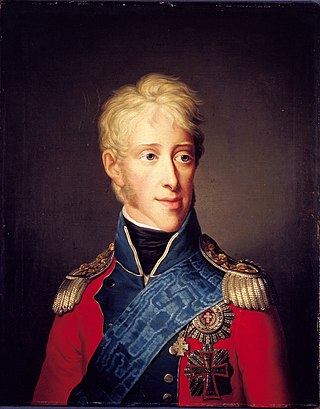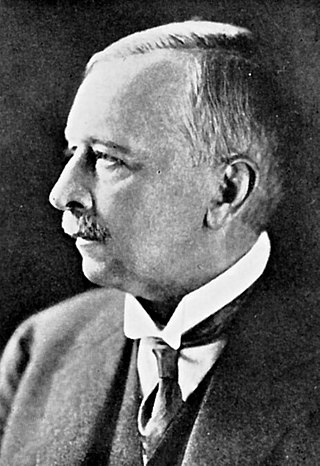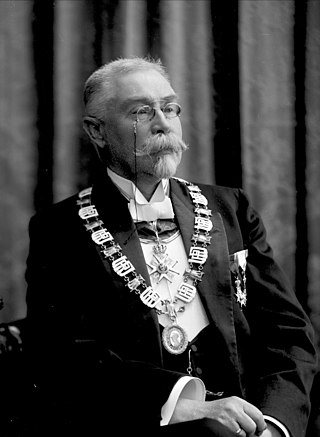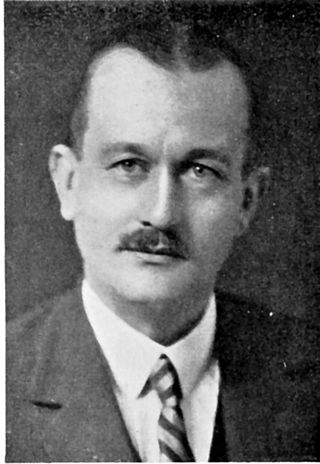
Frederick II was King of Denmark and Norway and Duke of Schleswig and Holstein from 1559 until his death.

Christian VIII was King of Denmark from 1839 to 1848 and, as Christian Frederick, King of Norway in 1814.

Frederick VIII was King of Denmark from 29 January 1906 until his death in 1912.

Frederick VI was King of Denmark from 13 March 1808 to 3 December 1839 and King of Norway from 13 March 1808 to 7 February 1814, making him the last king of Denmark–Norway. From 1784 until his accession, he served as regent during his father's mental illness and was referred to as the "Crown Prince Regent". For his motto he chose God and the just cause and since the time of his reign, succeeding Danish monarchs have also chosen mottos in the Danish language rather than the formerly customary Latin. As Frederick VI had no surviving sons to succeed him, he was succeeded on the throne of Denmark by his half-first cousin Christian, who was his father's half-brother's son.

Sweden and Norway or Sweden–Norway, officially the United Kingdoms of Sweden and Norway, and known as the United Kingdoms, was a personal union of the separate kingdoms of Sweden and Norway under a common monarch and common foreign policy that lasted from 1814 until its peaceful dissolution in 1905.

The Cemetery of Our Saviour is a cemetery in Oslo, Norway, located north of Hammersborg in Gamle Aker district. It is located adjacent to the older Old Aker Cemetery and was created in 1808 as a result of the great famine and cholera epidemic of the Napoleonic Wars. Its grounds were extended in 1911. The cemetery has been full and thus closed for new graves since 1952, with interment only being allowed in existing family graves. The cemetery includes five sections, including Æreslunden, Norway's main honorary burial ground, and the western, southern, eastern and northern sections. The Cemetery of Our Saviour became the preferred cemetery of bourgeois and other upper-class families. It has many grand tombstones and is the most famous cemetery in Norway.

Ulrik Frederik Gyldenløve, Count of Laurvig was Governor-general of Norway from 1664–1699. He was the leading general in Norway during the Scanian War, whose Norwegian leg is conventionally named the Gyldenløve War after him.

Fredrik Stang was a Norwegian law professor and politician for the Conservative Party. He served as a Member of Parliament, leader of the Conservative Party, Minister of Justice and the Police, Chairman of the Norwegian Nobel Committee, and Rector of The Royal Frederick University. His father was Prime Minister Emil Stang and his grandfather was Prime Minister Frederik Stang.

Bredo Henrik von Munthe af Morgenstierne was a Norwegian jurist, Professor of Jurisprudence at The Royal Frederick University from 1887, and the university's rector 1912–1918.

Jens Fredrik Wilhelm Schroeter was a Norwegian astronomer.

Frederik Ludvig Vibe was a Norwegian classical philologist and educator. He was Professor of Greek language at the Royal Frederick University from 1838.

Carl Nicolai Stoud Platou was a Norwegian civil servant and politician.

Thomas Fearnley was a Norwegian romantic painter, a pupil of Johan Christian Dahl and a leading representative of Norwegian romantic nationalism in painting. His son Thomas Fearnley (1841–1927) founded the Fearnley dynasty of shipping magnates.

Nils Olav Young Fearnley was a Norwegian businessperson and landowner.

Frederik Christian "Fritz" Schübeler was a Norwegian botanist.

Thomas Fearnley was a Norwegian shipping magnate, sports executive and philanthropist. He was a prominent figure in Norwegian shipping in the first half of the 20th century.

Fearnley is a Norwegian family of shipping magnates. The family is of English origin, originating in Heckmondwike in Yorkshire. The merchant Thomas Fearnley (1729–1798) migrated from Hull in England to Frederikshald in Norway in 1753. His son, merchant Thomas Fearnley (1768–1834), was married to Maren Sophie Paus (1782–1838). They were the parents of romantic painter Thomas Fearnley and astronomer Carl Frederik Fearnley.
Friedrich Bernhard Westphal was a German-Danish genre painter and illustrator. He was also known by his nickname Fritz Westphal.

Frederik Julius Bech was a Danish-Norwegian theologian and politician. He took part in the Meeting of Notables in Eidsvoll on February 16, 1814, and he served as the bishop of the Diocese of Oslo from 1805 to 1822. As the head of the Church of Norway, he crowned Charles III John of Norway at Nidaros Cathedral in 1818.

The Institute of Theoretical Astrophysics is a research and teaching institute dedicated to astronomy, astrophysics and solar physics located at Blindern in Oslo, Norway. It is a department of The Faculty of Mathematics and Natural Sciences at the University of Oslo. It was founded in its current form by Svein Rosseland with funding from the Rockefeller Foundation in 1934, and was the first of its kind in the world when it opened. Prior to that, it existed as the University Observatory which was created in 1833. It thus is one of the university's oldest institutions. As of 2019, it houses research groups in cosmology, extragalactic astronomy, and The Rosseland Centre for Solar Physics, a Norwegian Centre of Excellence.


















